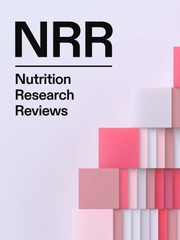Article contents
Exploring the efficacy and optimal dosages of omega-3 supplementation for companion animals
Published online by Cambridge University Press: 11 June 2025
Abstract
This review summarises findings from studies in companion animals with chronic diseases receiving omega-3 supplementation. Investigated conditions included dermatopathies (dogs n = 7), osteoarthritis (dogs n = 7, cats n = 2), cardiovascular diseases (dogs n = 7), dyslipidaemias (dogs n = 1), gastroenteropathies (dogs n = 2), chronic kidney disease (dogs n = 2, cats n = 3), cognitive impairment (dogs n = 4, cats n = 1), and behavioural disorders (dogs n = 3). When possible, dosages were standardised to mg/kg using available data on food intake and EPA/DHA concentrations. The minimum and maximum ranges of EPA and DHA, along with their ratios, were as follows: for dermatology 0·99–43 mg/kg EPA and 0·66–30 mg/kg DHA (ratio 1·4–3·4); for osteoarthritis 48–100 mg/kg EPA and 20–32 mg/kg DHA (ratio 1·5–3·4); cardiology 27–54·2 mg/kg EPA and 18–40·6 mg/kg DHA (ratio 1·3–1·5); dyslipidaemia 58·8 mg/kg EPA and 45·4 mg/kg DHA (ratio 1·3); cognition (1/5 studies) 225 mg/kg EPA and 90 mg/kg DHA (ratio 2·5); behaviour (1/3) 31 mg/kg EPA and 45 mg/kg DHA (ratio 0·7). Nephrology and oncology studies lacked sufficient data for calculation. Gastrointestinal diseases do not appear to benefit from omega-3 supplementation, likely due to inflammation-related malabsorption, although few adverse effects were reported in dogs. Other enteropathy studies were low-quality (case reports/series). The lowest omega-6/omega-3 ratio with anti-inflammatory effect was 1:3·75, and the highest was 5·5:1. In conclusion, the reviewed EPA and DHA doses appear effective for atopic dermatitis, osteoarthritis, cardiac disease, hyperlipidaemia, and cognitive and behavioural disorders. Further research is needed to clarify efficacy in gastrointestinal and oncological conditions.
Information
- Type
- Review Article
- Information
- Copyright
- © The Author(s), 2025. Published by Cambridge University Press on behalf of The Nutrition Society
References
- 1
- Cited by


